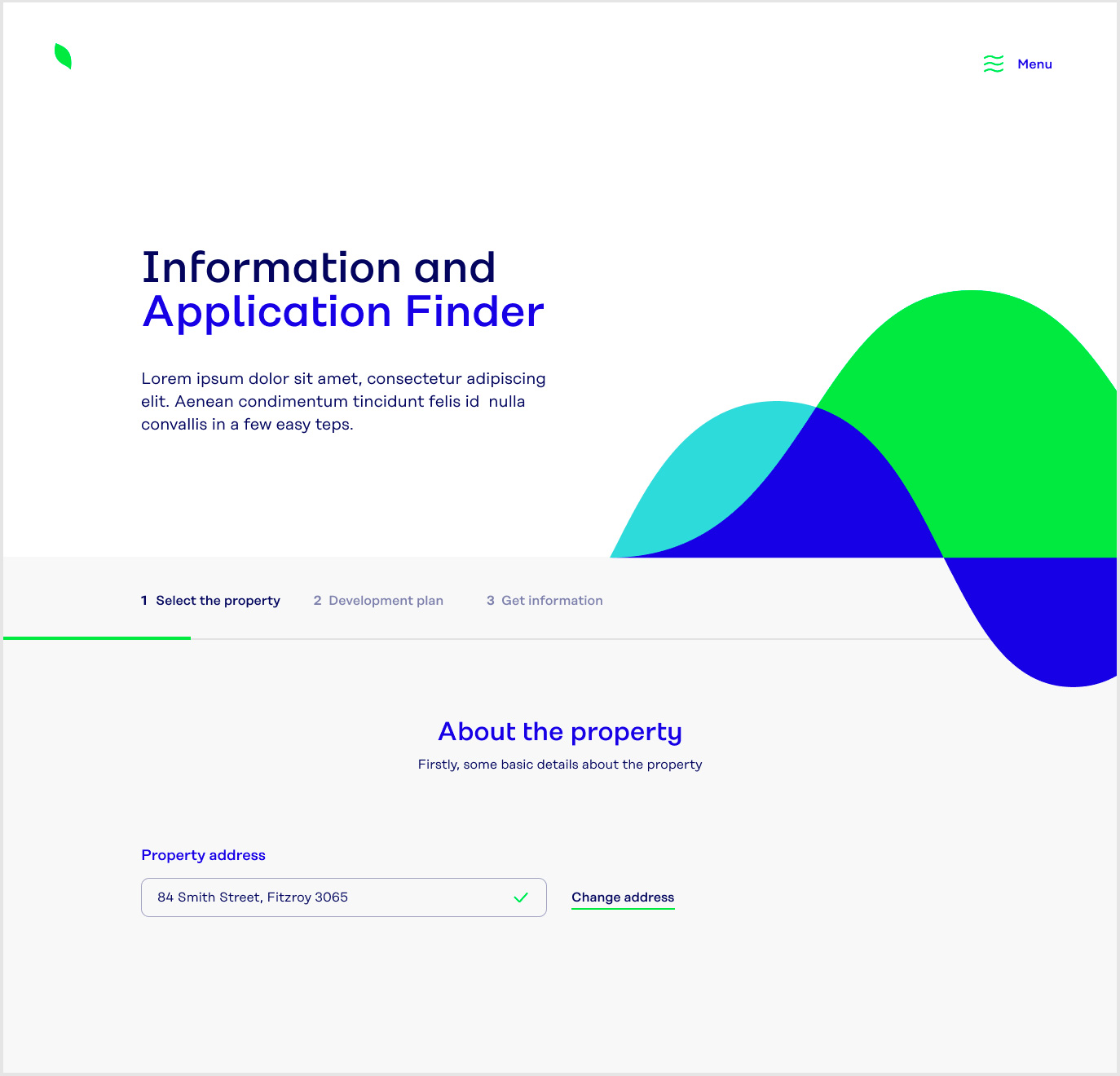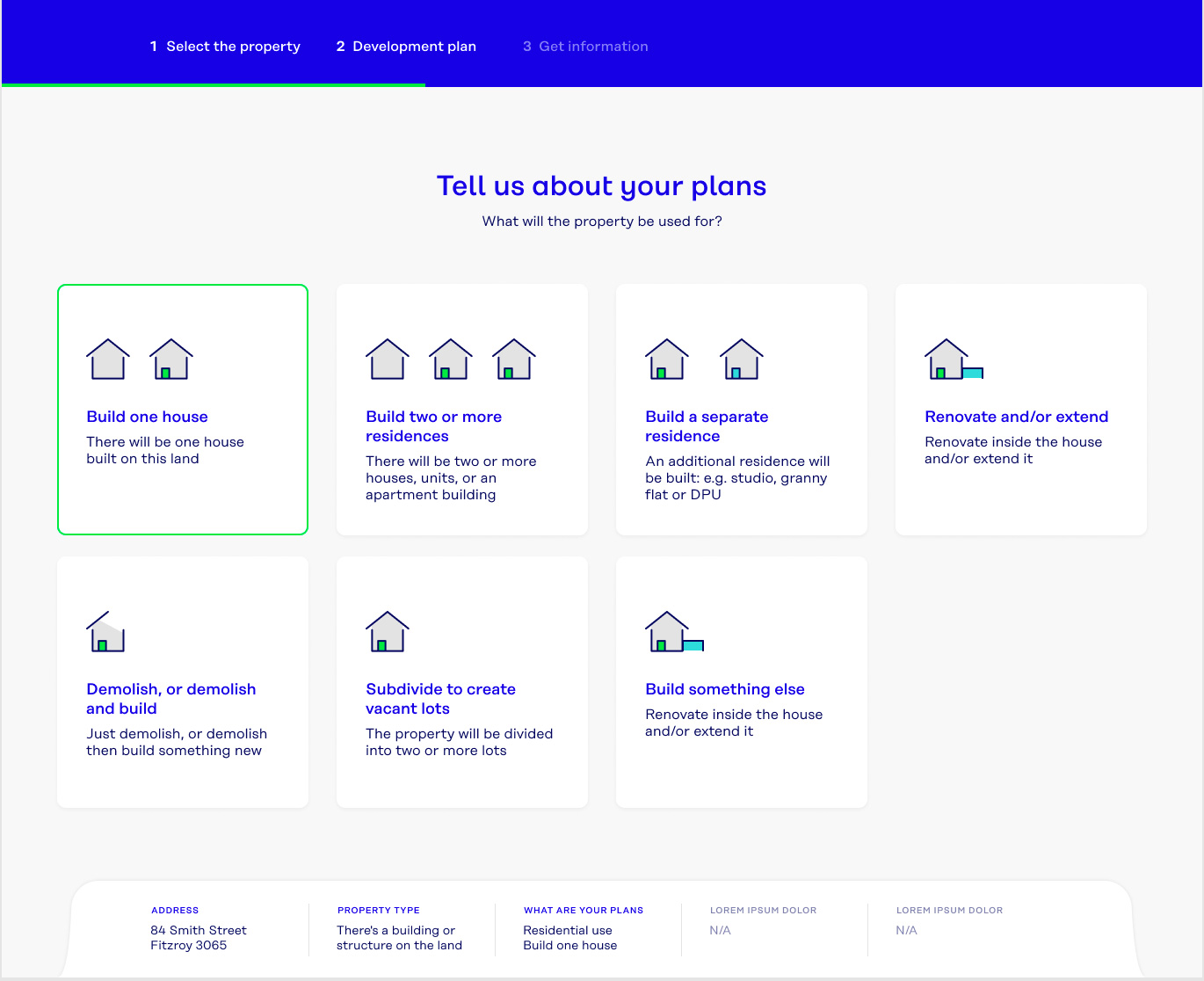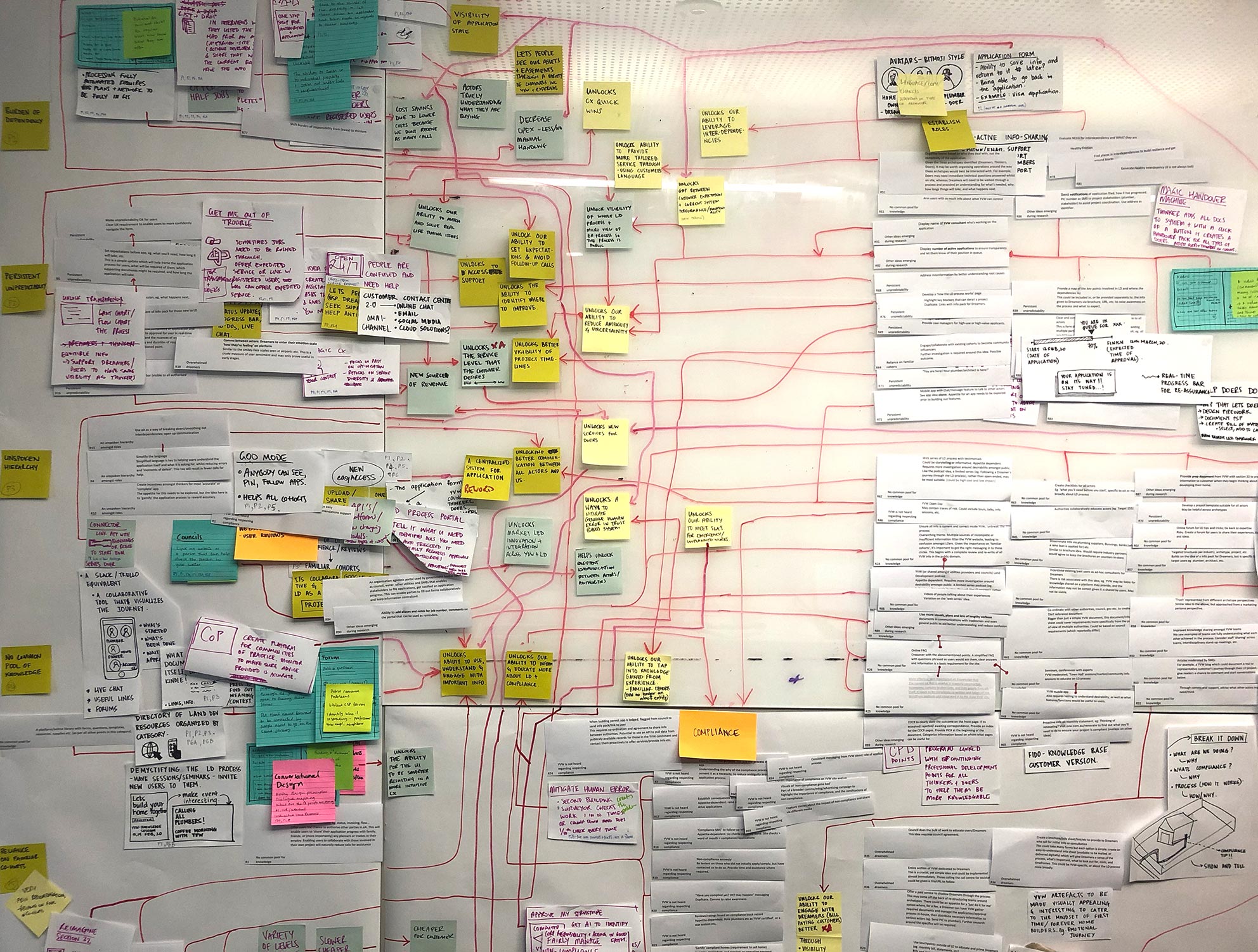
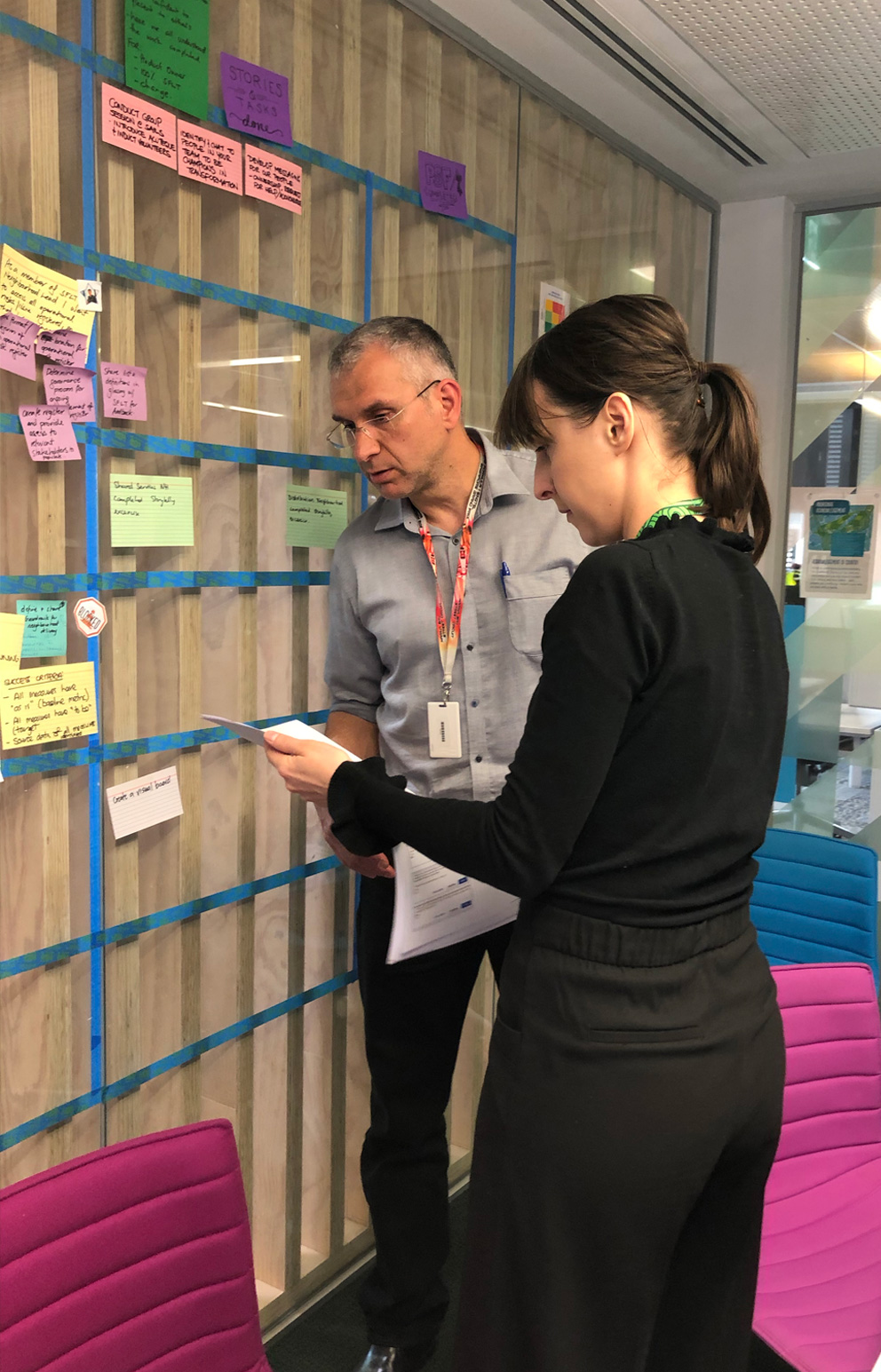
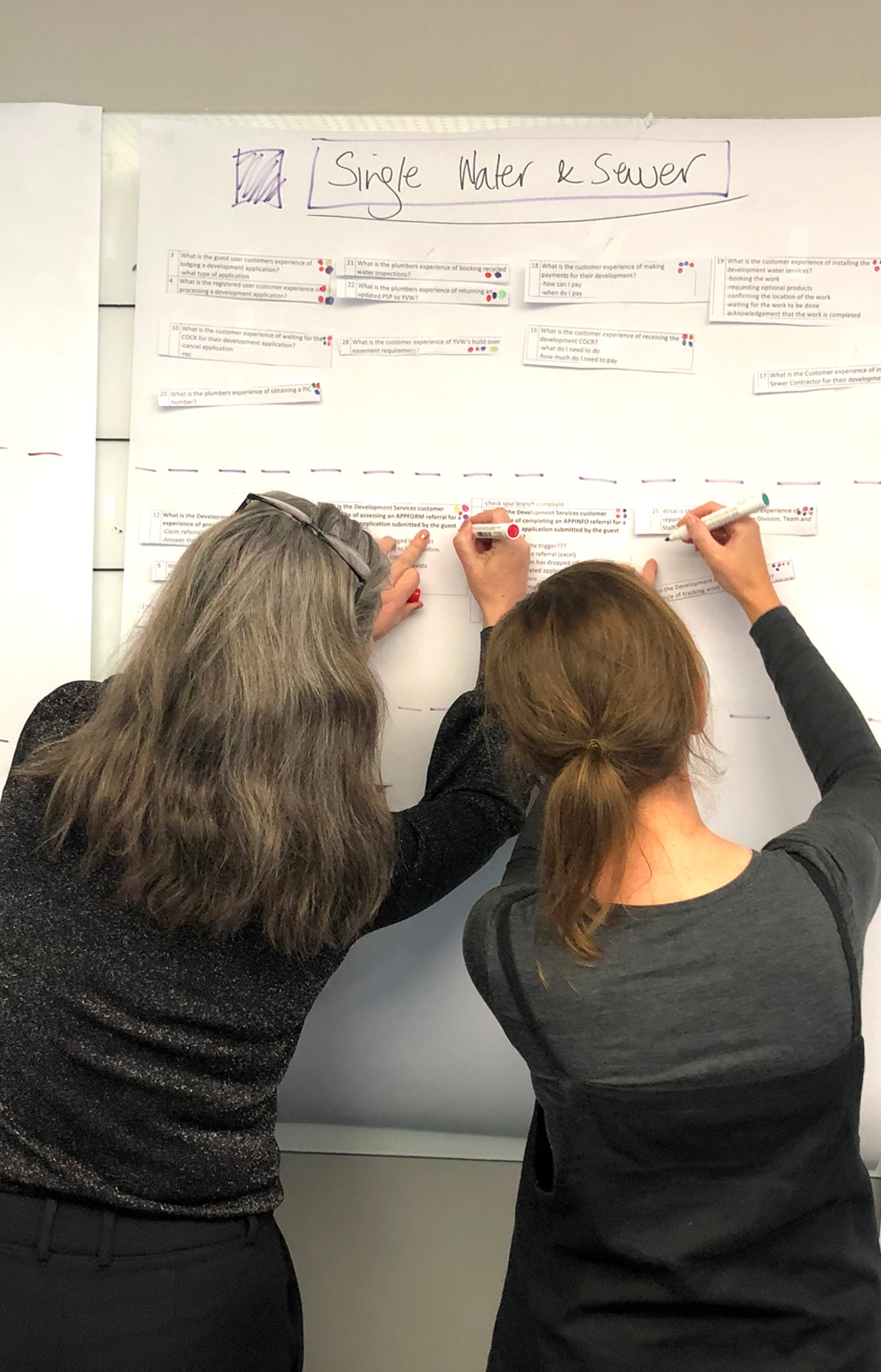



Understand how people experience land development and what the role of easyACCESS is in that?
Research report of findings.
Service redesign options to present to stakeholders
Establish Design principles.
Wireframes and User-tested digital prototype.
Lead UX Designer throughout the project. I also participated in ideation sessions for the Service redesign

Sample: Previous research reviewed
Output: Seven experience hypothesis extracted

Sample: 11 easyACCESS users qualitatively interviewed
Output: Deep, descriptive explanation of users' land development and eA experience

Sample: 52 easyACCESS users surveyed
Output: Validated hypothesis with order of magnitude through the land development journey
Aware • Apply • Execute
Research into people’s experience of land development and the easyACCESS portal was completed. 54 people participated in the study, which was a mixed quantitative/qualitative approach including survey, semi-structured interviews and desktop review. The findings inform re-design of the land development service experience and easyACCESS portal. The report concludes with nine new service design concepts for improving the end-to-end land development journey and the role of easyACCESS in this.
How do people experience land development and what is the role of easyACCESS in that?
1. What are peoples' motivations, attitudes and behaviour in relation to the development process?
2. What are people's pain points and areas of concern during the development process?
3. What service re-designs will relieve the pain points of land development and improve user experience?
• Persistent unpredictability
• No common pool of knowledge
• Create a single source of truth resource about the land development process
• Educate about various scenarios in the land development process
• Create an interactive map that provides centralised data for all properties
• Find ways to increase empathy between actors
• Develop a project template suitable for all actors
Recommendations to address these:
• Become the first source of information for everything land development
• Leverage other entities in land development eco-system for distributing information about the process,
e.g. Bunnings, Reece Plumbing, Councils
Recommendations to address these:
• Create a transparent process so users aren't left in the dark
The user types that experience land development: Dreamers, Thinkers, Doers.
These archetypes emerged based on their role in the land development process, their driving attitudes, motivations,
behaviours and what matters most to them.
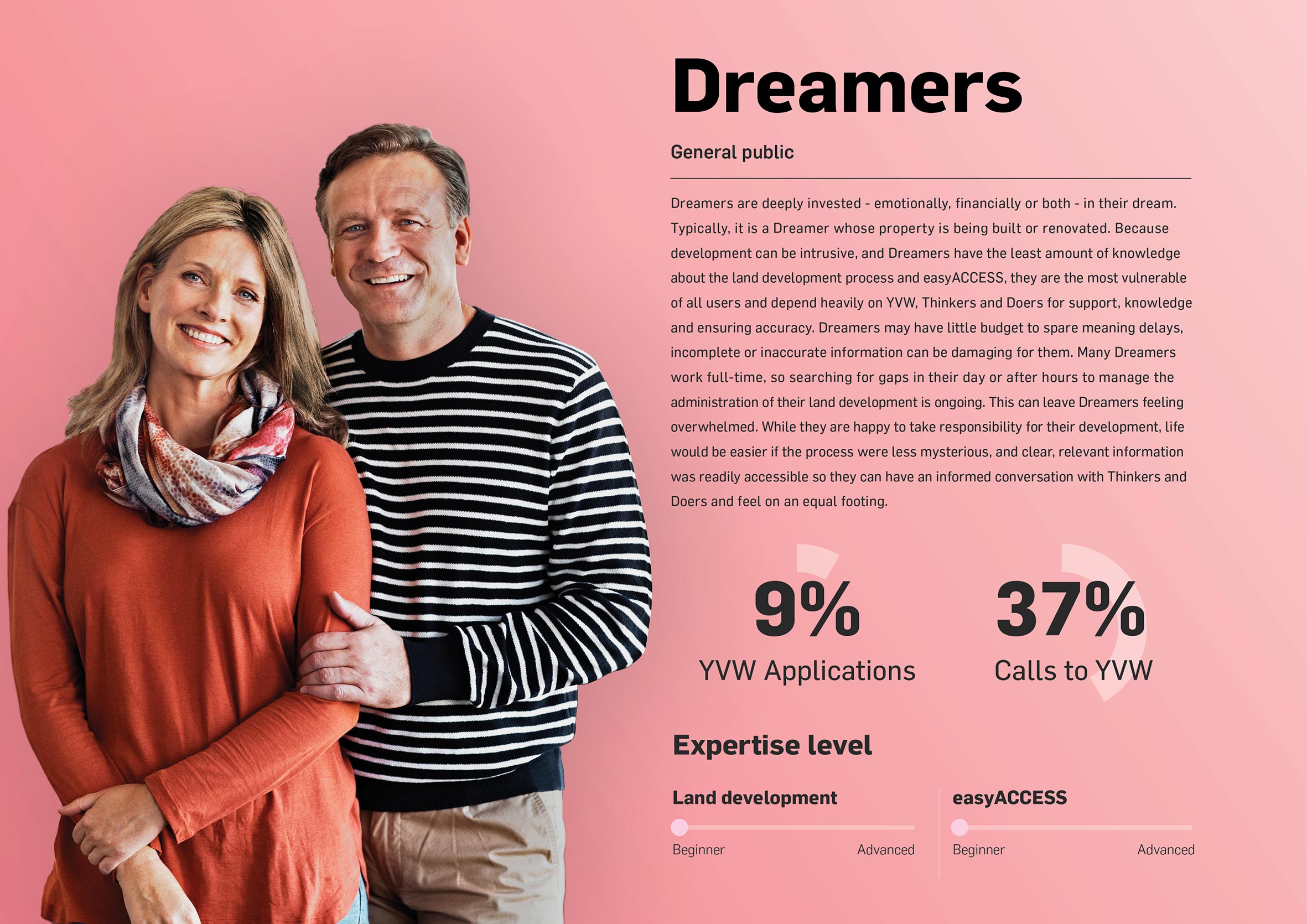

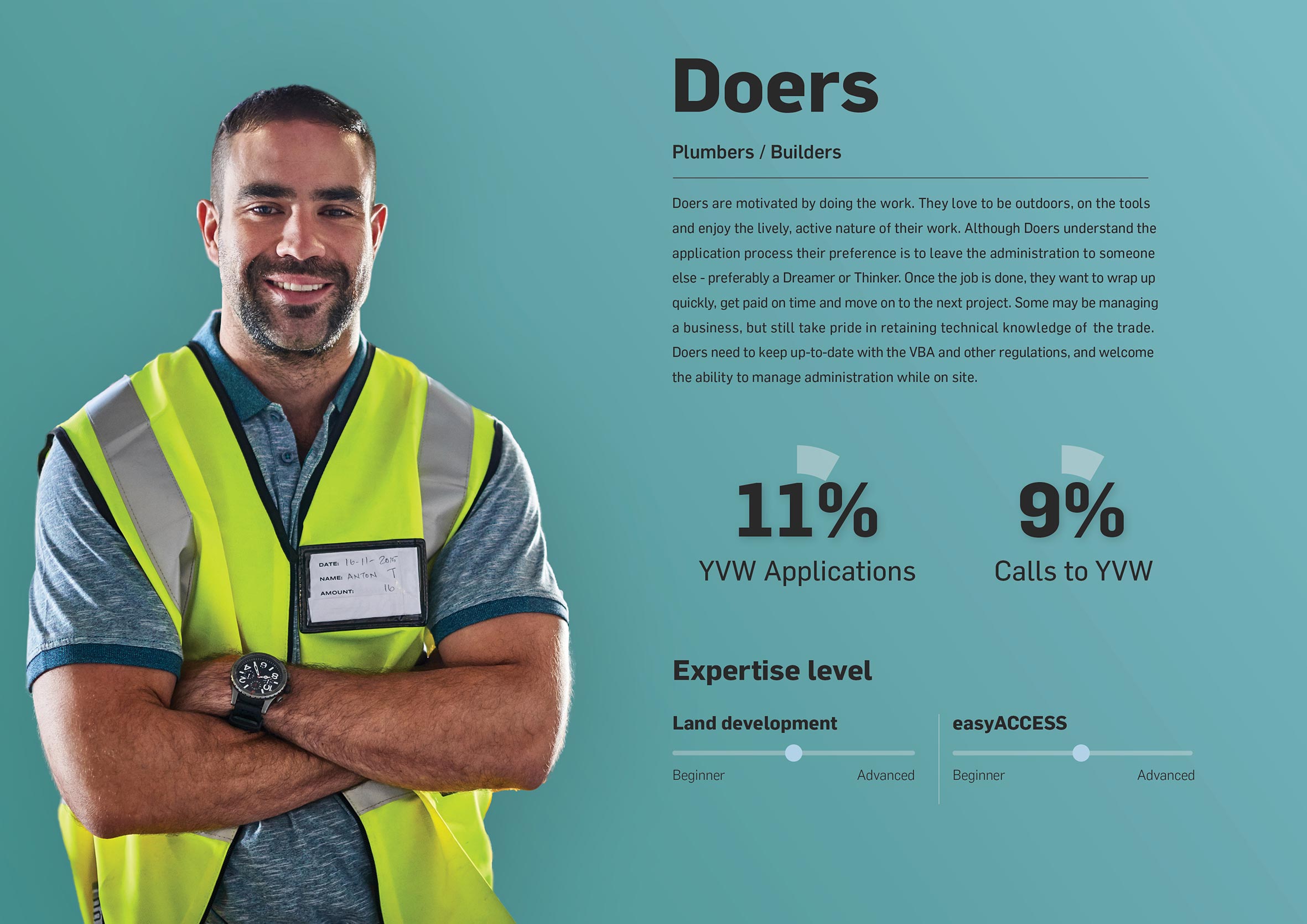

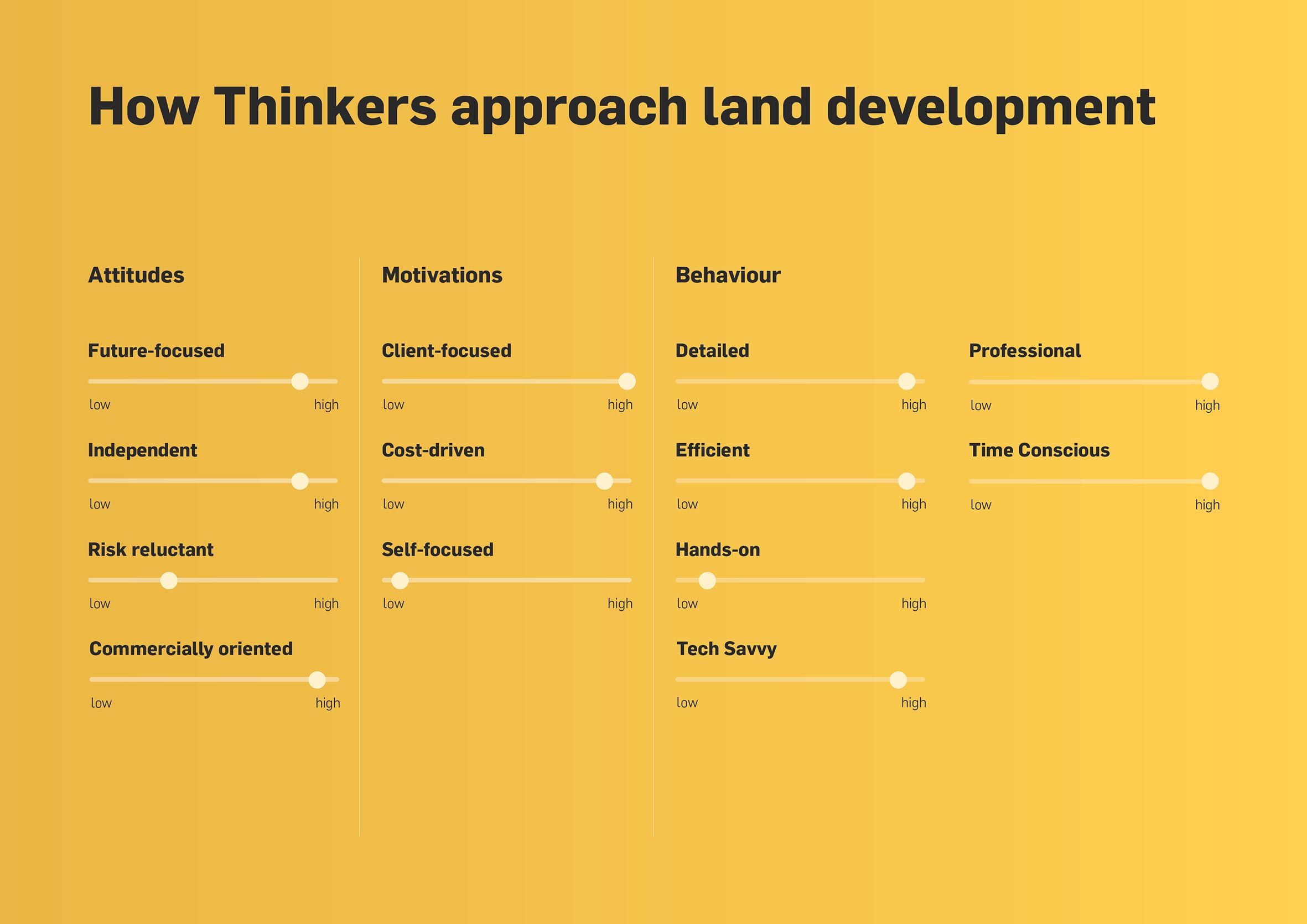
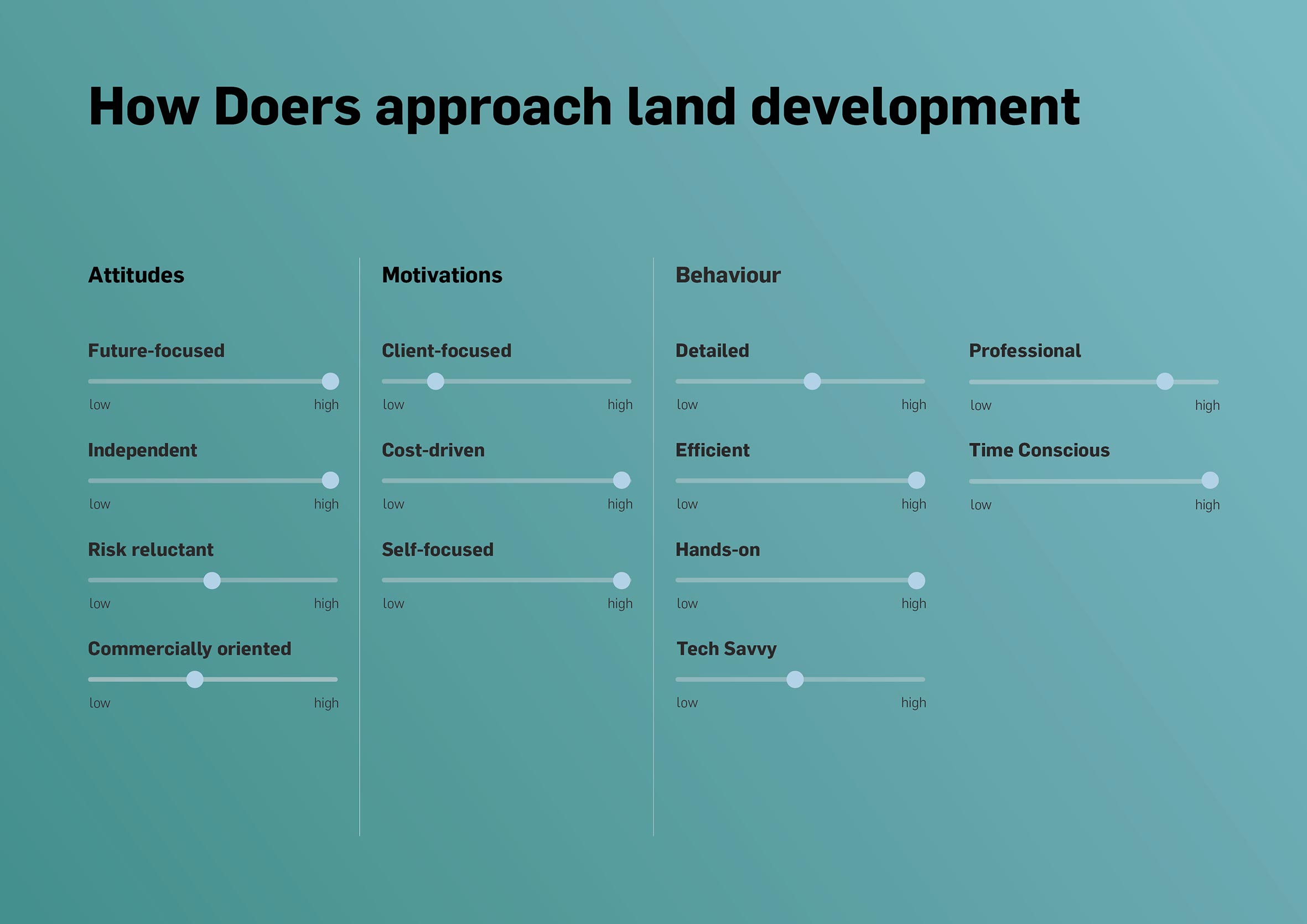

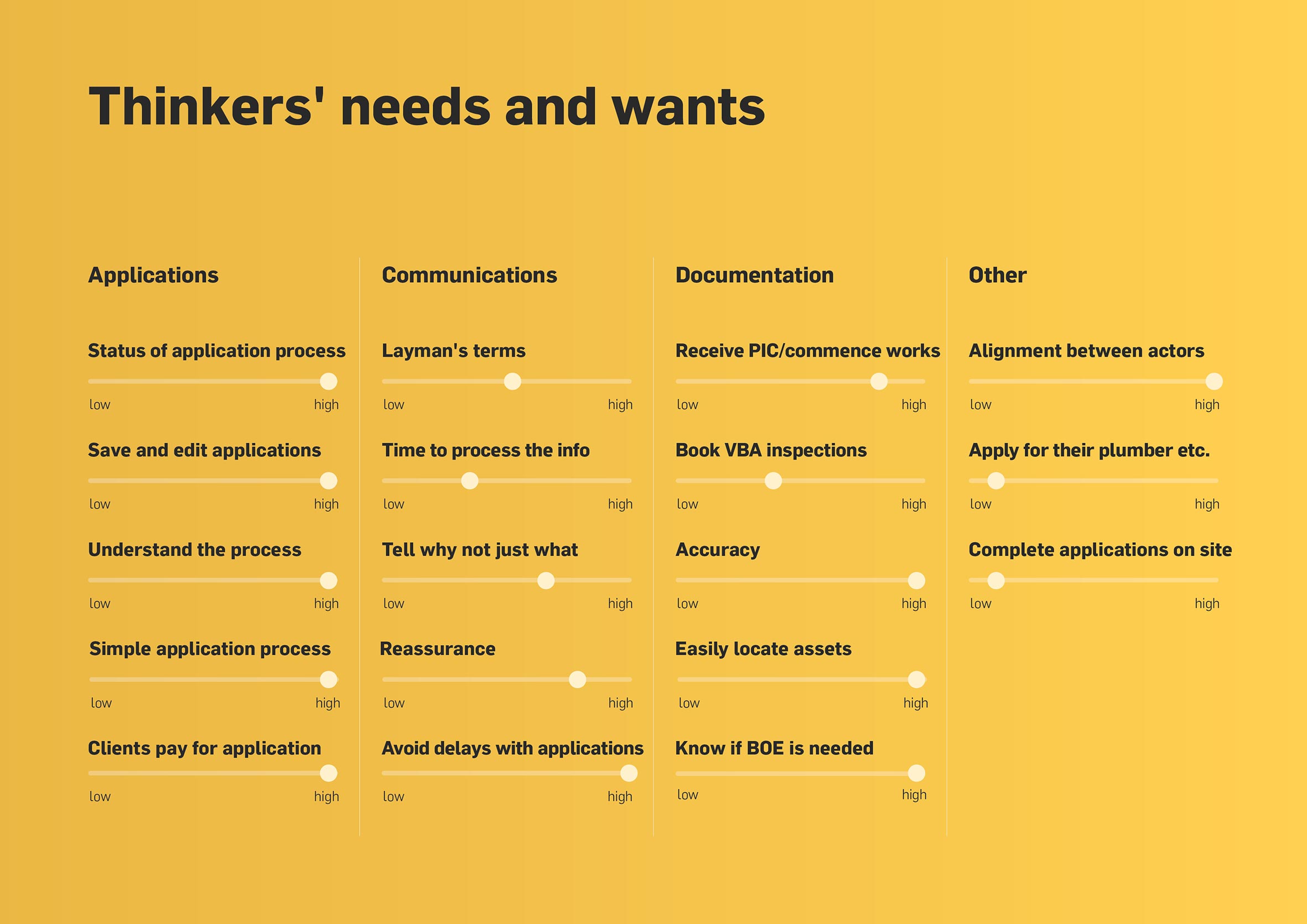
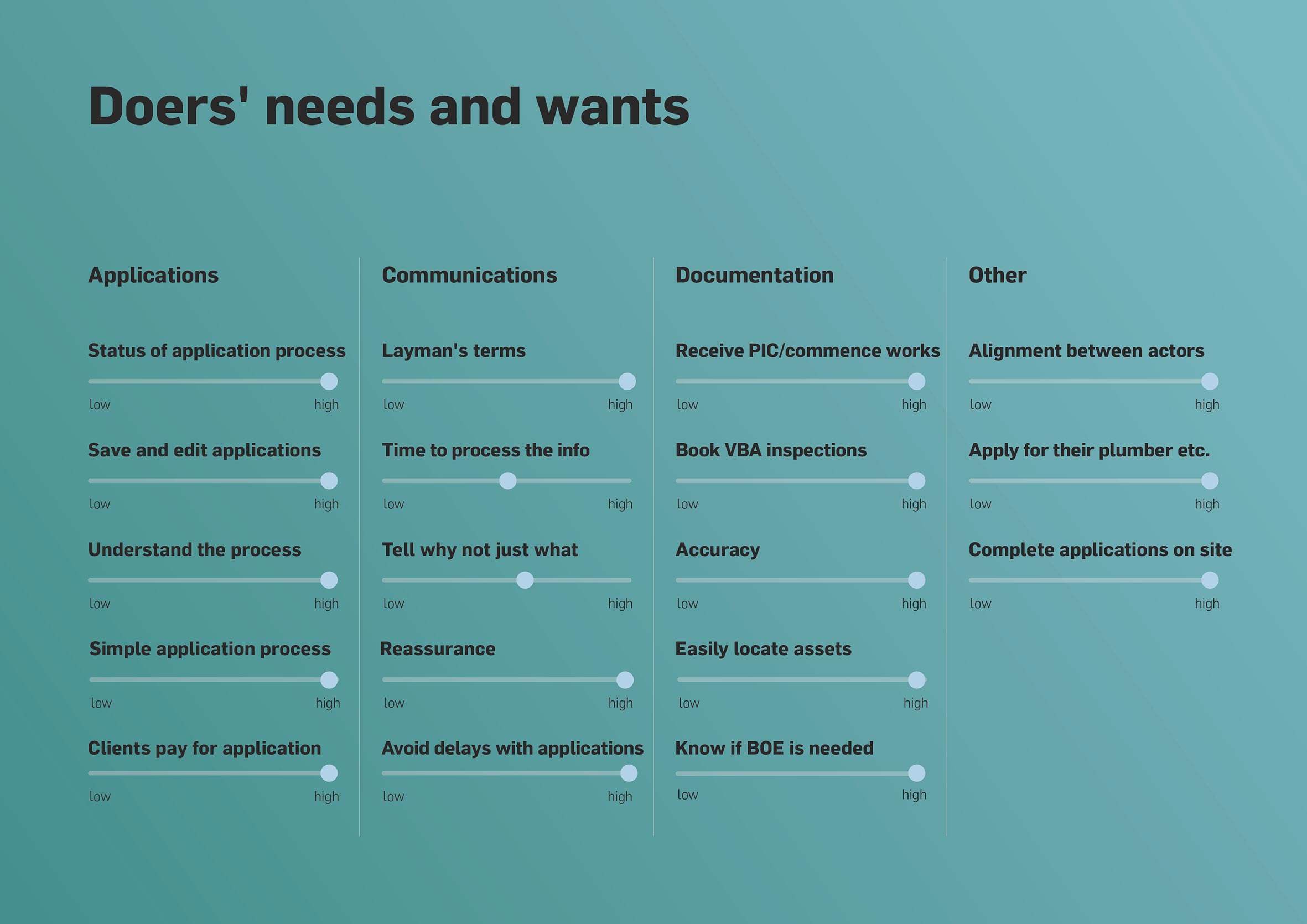
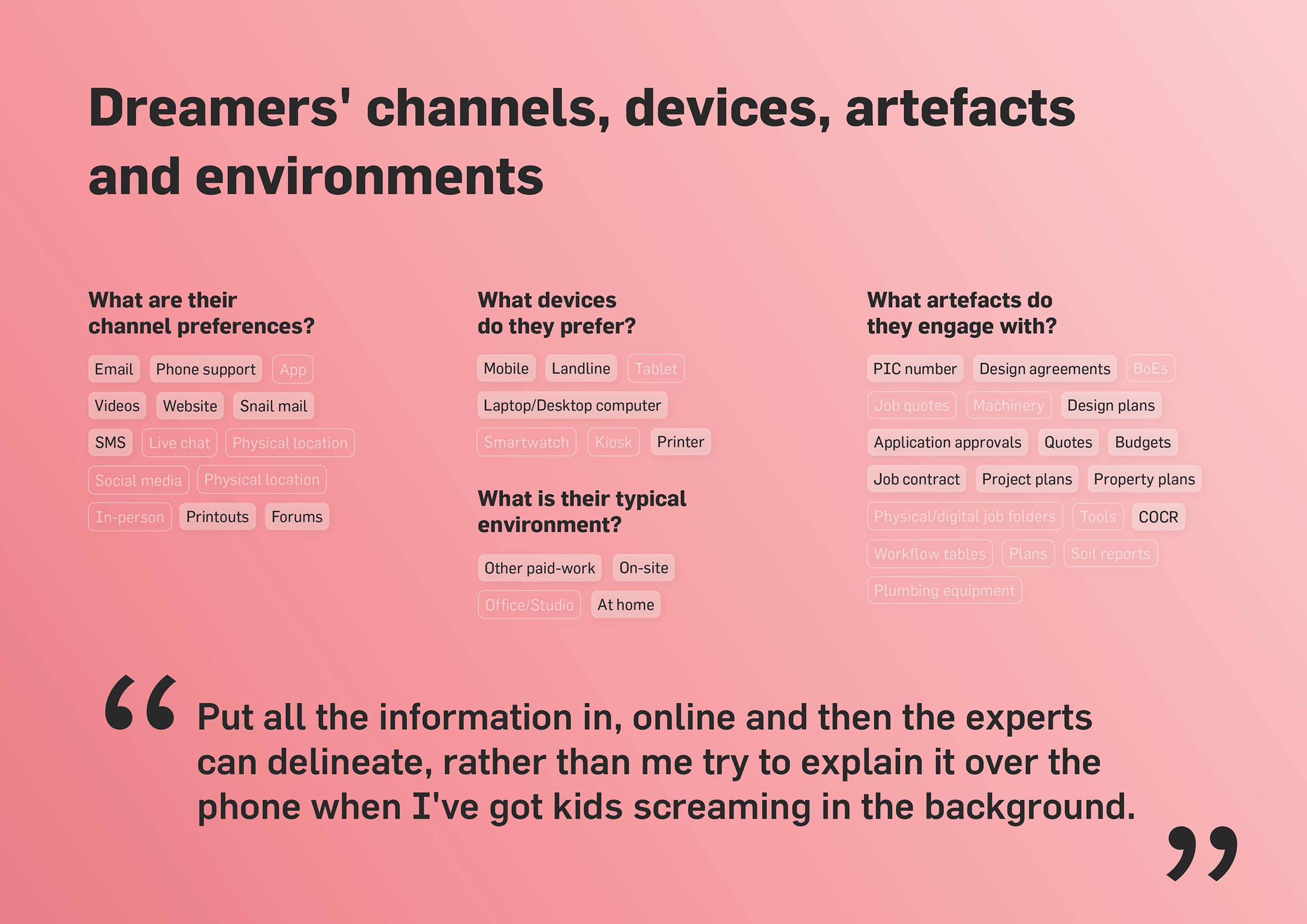

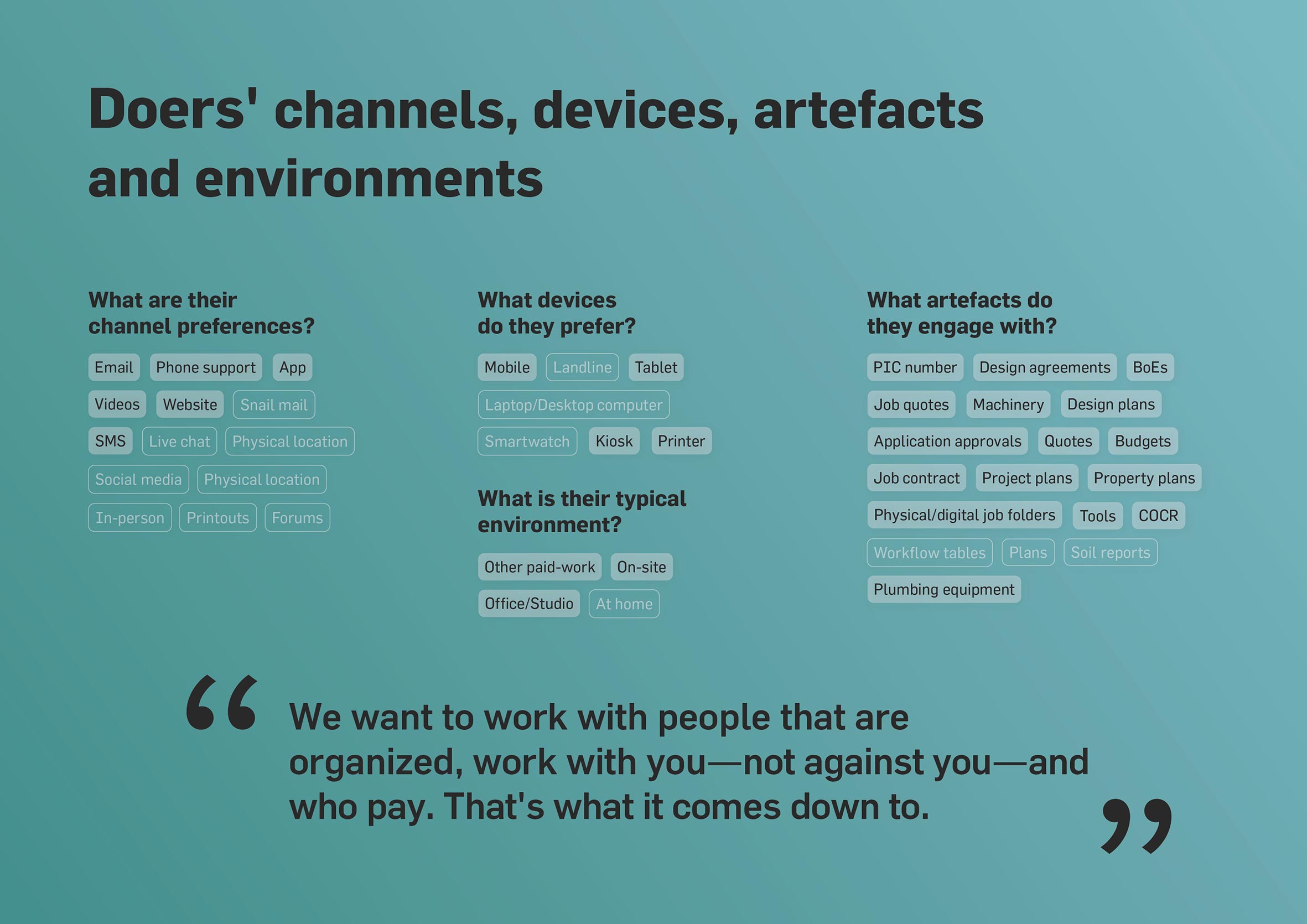
Re-imagining how land development could work based off the research was the next step.
Working closely with the service designers, they developed multiple options that could be rolled out.
I looked it from an online perspective and those particular touchpoints (giving customers the right tools to
feel confident in completing an application correctly) and the service designers looked further than that,
exploring relationships with external entities such as councils and how we could fill the knowledge gap so
many customers have when it comes to land development.
Further down the track after a design path had been chosen, multiple workshops were held with the core team to
gather all the requirements. Further workshops were held with stakeholders to gather any insights we may have missed.
This included Customer Care who work through applications with customers over the phone and are very familiar with their
pain points first hand. System architects to assess from a technical perspective. We made sure all the way through that
we were research (customer) and design lead, not tailoring our designs to what our current systems and processes were capable of.
Service blueprints were developed as we worked through these workshops. Due to the complex nature of land development,
Service Blueprints were often sliced due to the amount of detail captured.
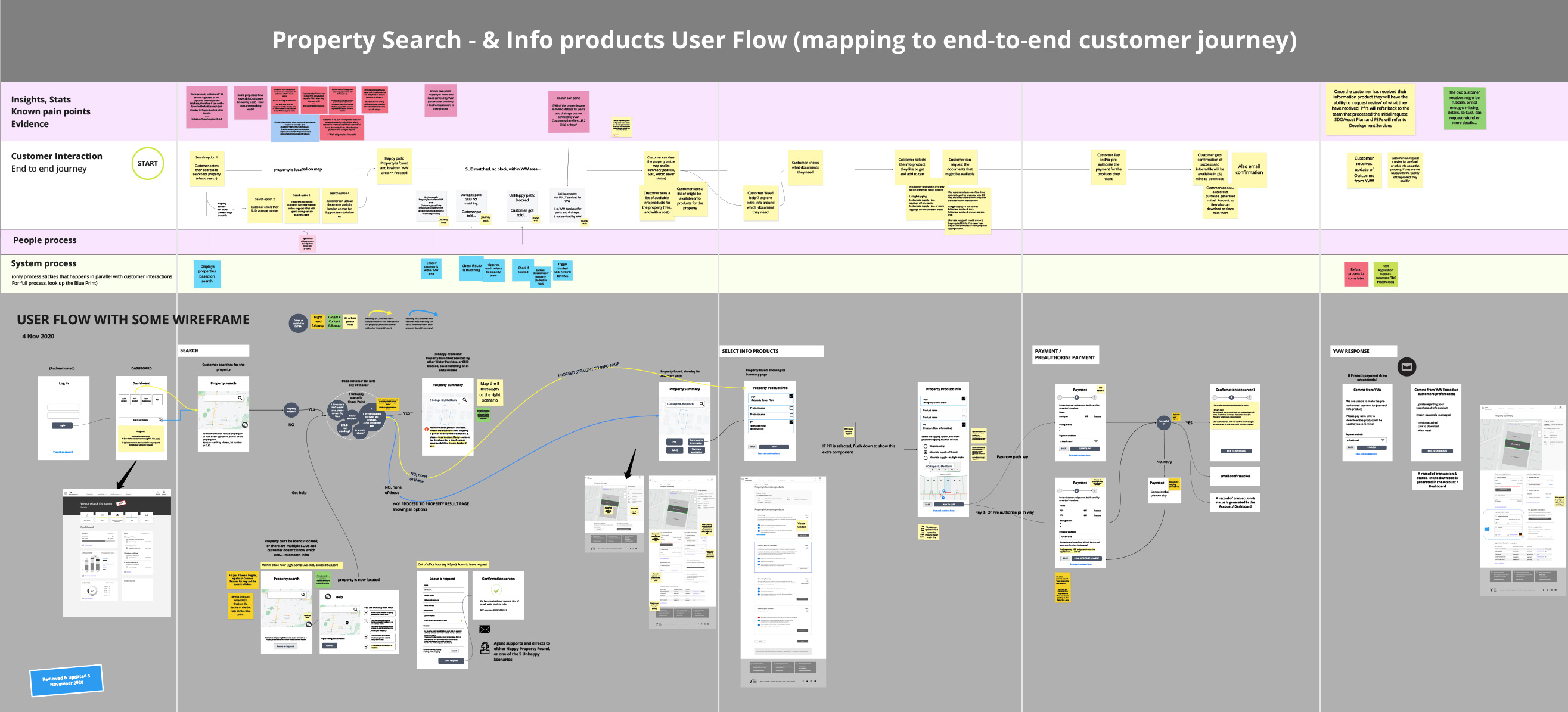
From the Service Blueprints, user flows were created in Miro to map out interactions points.
From there mid fidelity wireframes were created. So far over 50 screens been put into an interactive
prototype to map out all the possible scenarios. These were tested in workshops with multiple stakeholders
who understand the land development processes and have a good understanding of where customers go wrong.
They also make sure we capture all the right information from customers so their application can be processed.
Common components are being created throughout this process. This creates consistency for the customer and will decrease
development time. Content has also been written in a language that makes sense to the customer.
A new part of the application process we are adding to land development is "Dev intent". In the past we have asked customers what application they would like to apply for, assuming they know enough about the process to do so. Adding a series of questions at the beginning, asking customers what they are planning to do, in everyday language (not technical speak), then letting the customer know what application/s they need.
As a customer, I would like to build a new residential house on a block of land that isn't currently empty


As a customer, I would like to build 2 or more new dwellings on a block of land that is currently empty


As a customer, I would like to build a swimming pool on land that is currently not empty


Testing with participants was next. We are looking at a diverse range of people that fit with our archetypes, Dreamers, Thinkers and Doers.
There are many stages to the land development portal. So far we have completed the Development intent for residential and Single sewer application.
Applying the Design Language System to these designs is also in progress.

Customers don’t feel confident submitting applications for land development as they are unsure which ones are needed for their project and when they do submit, they are often incorrect.
Ask customers in simple language, their plans for their property we can determine the right application for their development needs.
An increase in correctly submitted applications and reduced calls to the call centre.
The purpose of this research was to gather feedback on mid-fidelity wireframes for Land Development - Residential intent, focusing on key applications which in the past have been wrongly submitted and/or required help from YVW staff. Qualitative research (usability testing interviews) was conducted with 6 participants over a 1.5 week time period. Interviews were 75 minutes long, moderated remote face-to-face. There was a mixture of male and female as well as a mix of our archetypes; Dreamers, Thinkers and Doers.
Ask customers in simple language, their plans for their property so we can determine the right application for their development needs.
Participants interacted with the desktop version of the prototype on a laptop.
Warm-up activity discussing their experience with Land Development, if any.
Seven scenario based tasks focusing on application topics such as:
• Build another house
• Build over easement (BOE)
• Build a granny flat
• Demolish and build
• Renovate and build
• Subdivide and build
Eleven short answer questions about Land Development and their understanding of it.
Organise the cards into categories and sub categories and give them a name you think is appropriate. Talk through.
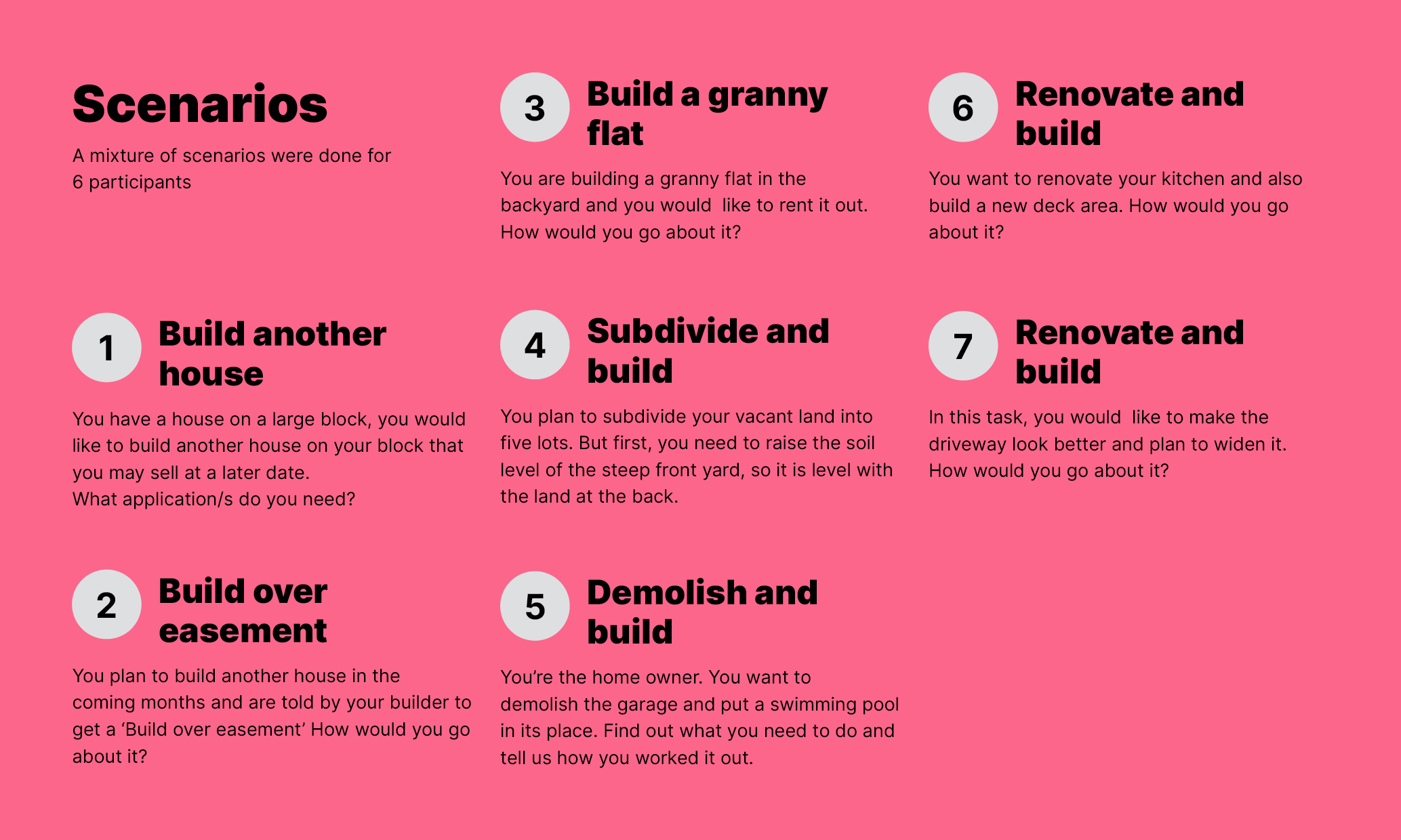

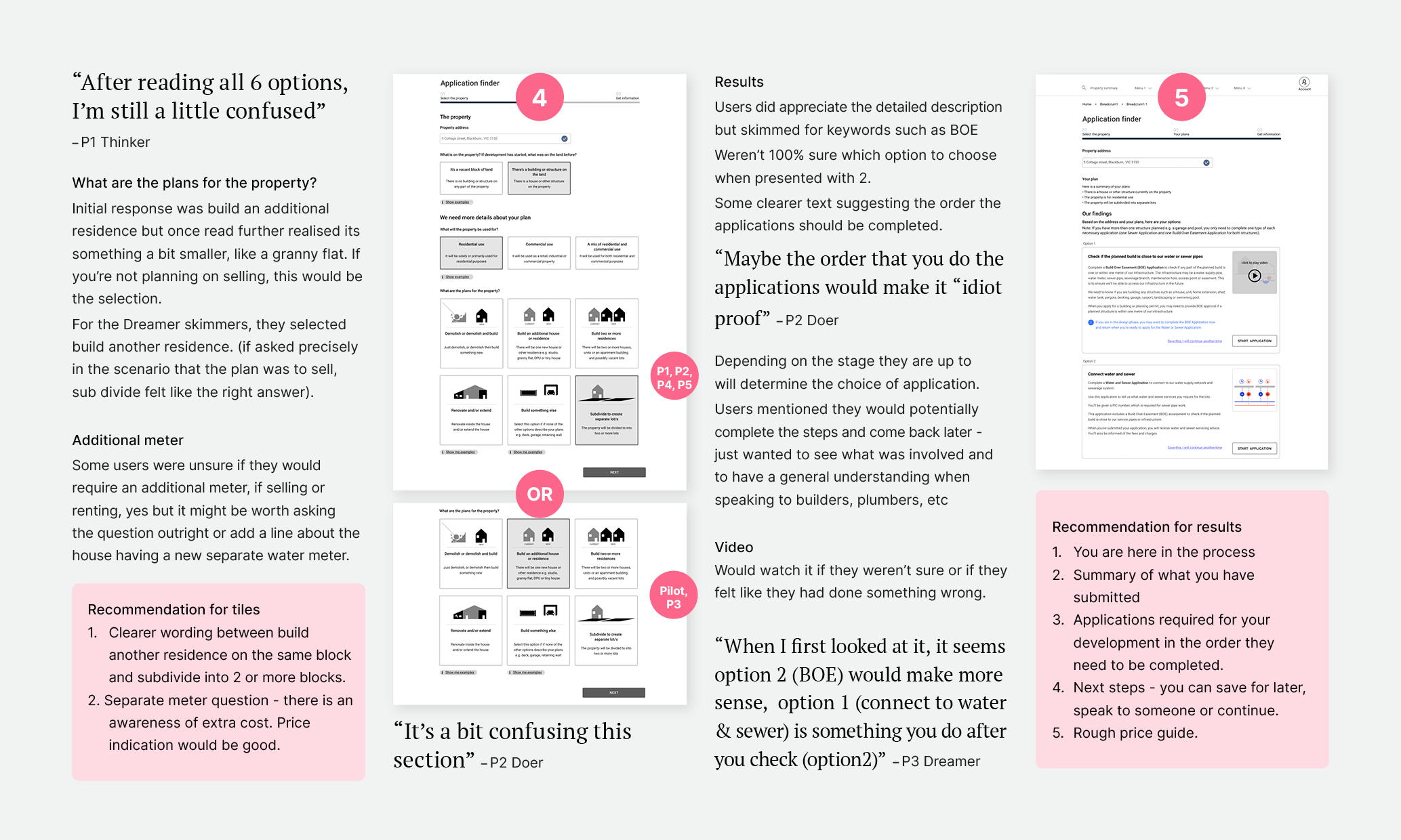



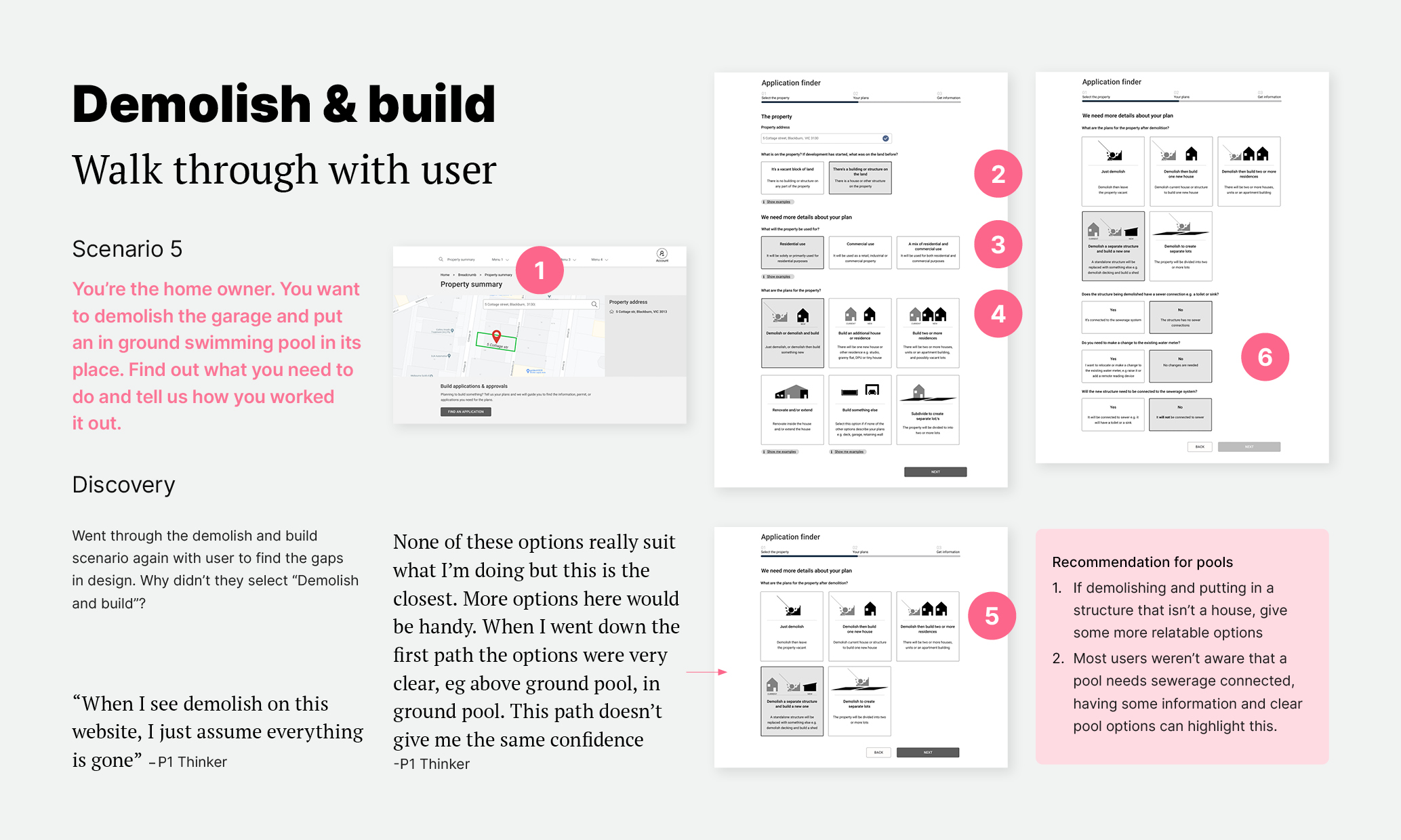


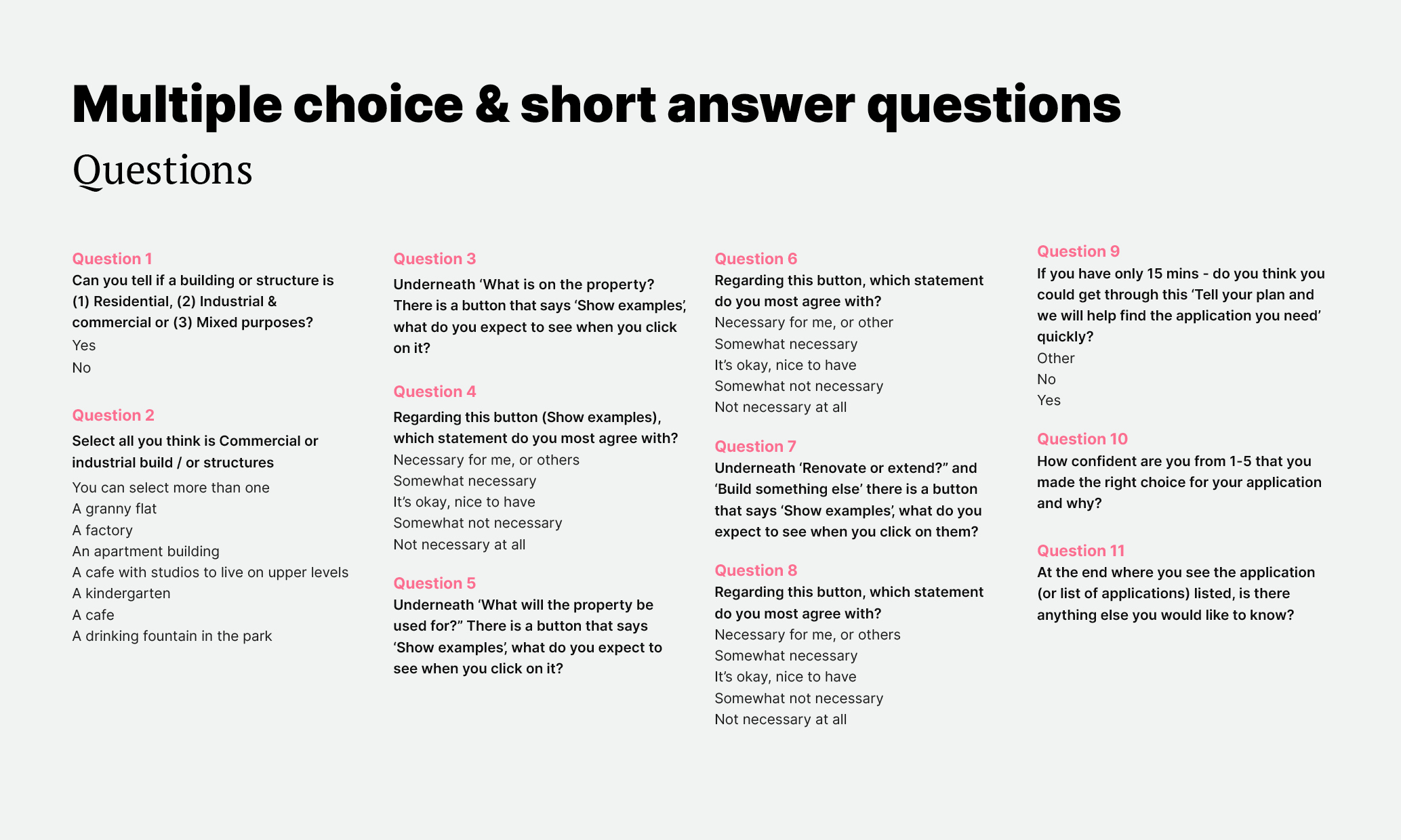
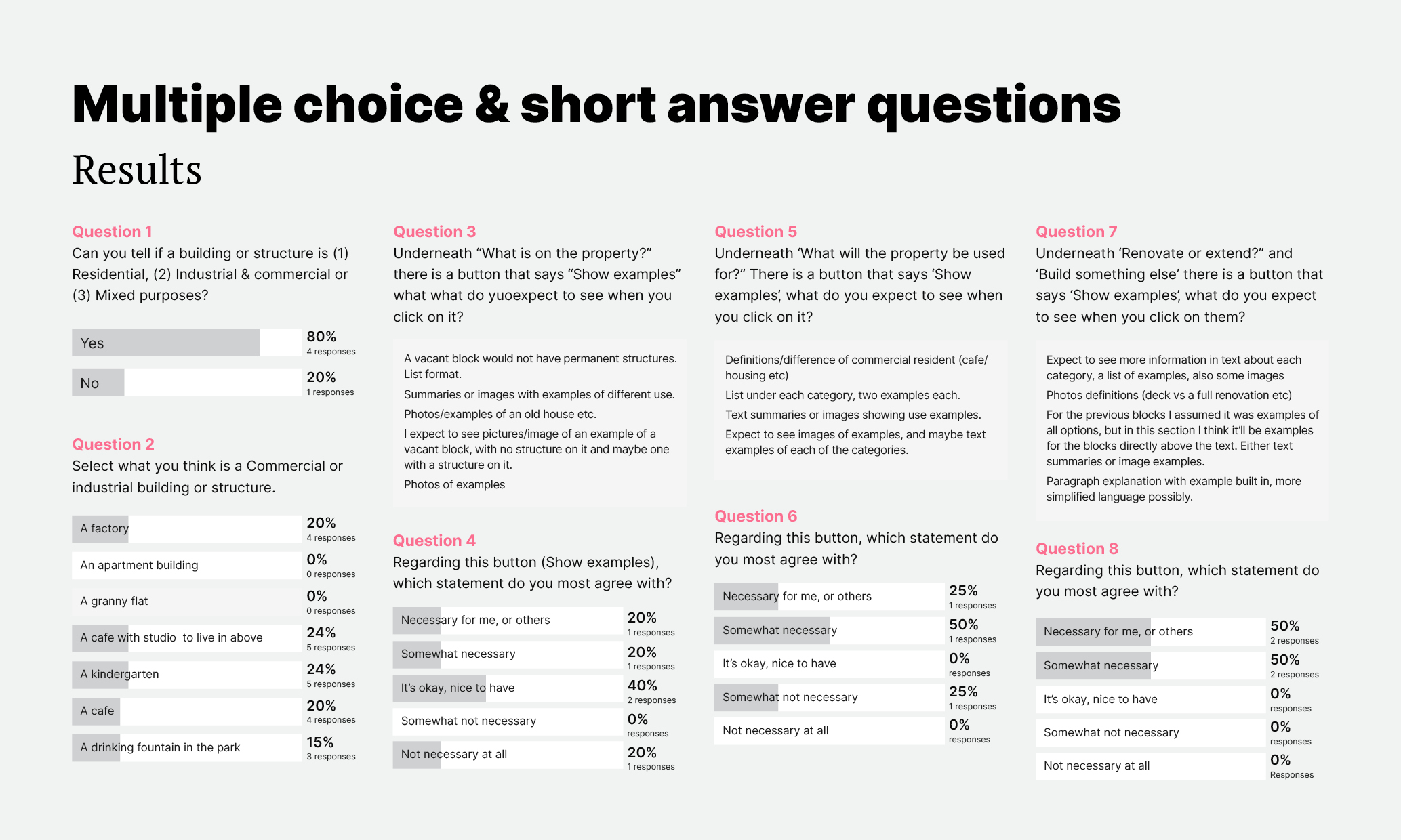

In progress
